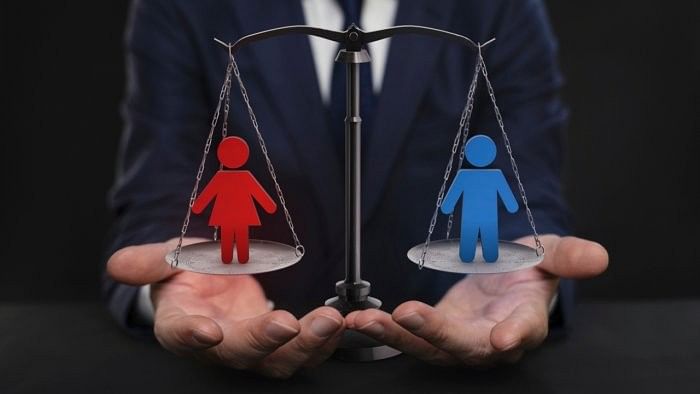
Representative image
Credit: iStock Images
The Sustainable Development Goals call for achieving gender equality and empowering women and girls (SDG 5), but climate change threatens to exacerbate existing gender inequalities.
A recent study commissioned by the Ministry of Women and Child Development and conducted by the MS Swaminathan Research Foundation (MSSRF) reveals that women and children face much greater vulnerabilities to climate change, particularly in regions prone to climate-related disasters.
The study highlights that children and women from these vulnerable agro-ecological zones are more likely to be underweight and stunted, indicating nutritional deprivation.
A combination of factors such as poverty, gendered roles and responsibilities, and cultural norms place women and girls at higher health risks due to the climate crisis.
Women represent the majority of the world’s poor and are more dependent on natural resource-based livelihoods. In India, women heavily rely on agriculture for their livelihoods.
According to the PLFS survey 2022–23, 64.3 per cent of women workers in India are engaged in the agricultural sector, with the figure rising to 76.2 per cent in rural areas. Climate change impacts soil fertility and rain patterns, reduces crop yields and stocks, and increases the vulnerabilities of poor women who are already nutrition-deficient.
Even the nutritional quality of grains is affected by climate change, increasing the prevalence of ‘hidden hunger’. Women are particularly affected as their requirements for micronutrients like iron and zinc increase during pregnancy, menstruation, and lactation.
Studies have shown how the vicious cycle of poor nutrition can continue intergenerationally, with nutrient-deficient pregnant women passing on their poor micronutrient reserves to their newborn baby girls, perpetuating the cycle.
The MSSRF report also reveals some worrying statistics. Exposure to drought events has been found to increase the likelihood of child marriage by 35 per cent, teenage pregnancy by 17 per cent, and intimate partner violence by 50 per cent.
Exposure to extreme weather conditions can result in a loss of agricultural productivity and have serious implications for income and livelihoods. In scenarios where men can migrate for work, the situation is somewhat better.
However, the likelihood of male members migrating for work depends on several factors, such as the initial capital required to migrate, skills requirements, and social networks, which are influenced by one’s class and caste positioning in society. Where men are unable to migrate, the economic distress caused by the loss of farm-based incomes results in violence against women.
Suniti Garg, an Indian activist, tells The Guardian that “if a man can migrate to another state to get work, but when he cannot for whatever reason, his wife is at the receiving end of his anger and feelings of uselessness.”
The link between child marriage and exposure to climate change, though not explicitly evident, is nonetheless important to address. These are often the effects of food insecurity among poor households dependent on climate-sensitive activities such as agriculture, forestry, and fishing.
A United Nations Population Fund (UNFPA) brief reports that girls who belong to families in the lowest income quintiles are twice as likely to be married as children compared to those from families in the highest income quintiles.
The brief also notes that girls with only primary education are twice as likely to experience child marriage compared to those with secondary or higher education.
Girls are also more likely to drop out of school during floods or droughts, making them more vulnerable to early marriage, sexual exploitation, and adolescent pregnancies.
Marrying off a child is seen as a coping mechanism in response to the loss of income and assets due to climate disasters. Families justify it as “having one less mouth to feed.” However, child marriage compromises the reproductive autonomy of young girls, which is their ability to decide on matters relating to contraception, pregnancy, and childbirth. This results in unintended pregnancies, inadequate spacing between children, and poor health outcomes for young mothers.
The policy responses to address the impacts of climate change on women require a multi-pronged approach. Regardless of climate change, women’s agency relating to their marriage, childbirth, health, and nutrition must be improved.
The transformative role of education cannot be emphasised enough in this regard. Similarly, improving the food security of Indian households can significantly reduce the need for families to marry off their girls young.
Increased budgetary allocations and addressing gaps in the implementation of nutrition support programmes like Saksham Anganwadi and Mission Poshan 2.0 are important.
Most importantly, women should be at the forefront of climate change mitigation and adaptation. Their role in households and communities involves constant interaction with natural resources, necessitating measures that improve their access to and decision-making regarding the use of land and other critical resources.
(The writer teaches economics at Christ (deemed to be university), Bengaluru)